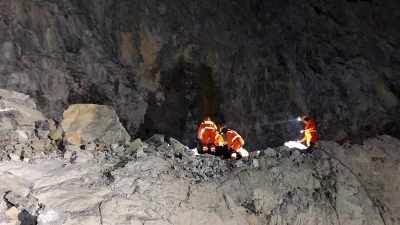Are the markets ripe for freefall, or are they just correcting?
Now that the Dow Jones industrial average has shed 5.5 per cent since mid-May, it’s time to ask the question: How do you distinguish a short-term stock market correction from a full-blown bear market?

Now that the Dow Jones industrial average has shed 5.5 per cent since mid-May, it’s time to ask the question: How do you distinguish a short-term stock market correction from a full-blown bear market? You wait awhile, of course. But already there are clues in technical market data, such as who is doing the buying and selling, the price of stocks relative to corporate earnings, inflation data, and the length of time since the last recession.
Corrections, defined as a drop of 5 per cent over a few weeks or a month or two, are pretty common. Since 1900, the Dow has fallen at least that much more than 300 times, or an average of more than three times a year, according to Ned Davis Research Inc. But nine out of 10 such slides bottom out and start rising again. It’s the other 10 per cent that scare the pants off investors. They turn into bear markets, in which the broad market indicators lose 20 per cent or more and take their own sweet time coming back.
Even the professionals have trouble telling the two apart. In 2005, the Dow dropped more than 800 points — 8 per cent — in March and April before rallying, then dropped an additional 400 points in September and October before climbing some more. In both cases, investors who jumped out prematurely would have suffered losses and missed another good rise.
On the other hand, analysts were full of rosy predictions in 2000 and 2001 that the market was simply resting briefly and would soon resume its dizzying climb. None of the major indicators have ever returned to their early 2000 highs.
‘‘Picking the short-term movement of the stock market is like standing at the roulette table and saying, ‘I think red is coming up next’ and then congratulating yourself when you are right,’’ said Andrew Smithers, a British economic consultant.
‘‘There’s some panic in the street,’’ said Al Goldman, chief equity strategist for brokerage firm AG Edwards & Sons Inc, ‘‘but I don’t feel it’s justified. … We don’t have any signs that a recession is at hand, and inflation, although it’s up, is still pretty well contained.’’ George Feiger, who runs Contango Capital Advisors, a wealth-management business, looks at the same signals and sees trouble.
‘‘All the technical indicators are showing that we must be getting near the end. The economy is slowing down, the dollar is tanking, people are pulling their money out of equities and putting them in cash, huge amounts of debt have been issued by below-grade (high-risk) issuers,’’ he said. ‘‘Where else can it go? The real question is not where will it go but how far’’.
Brooke A. Masters






- 01
- 02
- 03
- 04
- 05

























